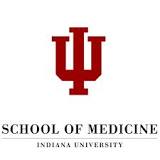Safety Study of Using Stem Cells to Stimulate Development of New Blood Vessels in Peripheral Vascular Disease
| Status: | Completed |
|---|---|
| Conditions: | Peripheral Vascular Disease, Cardiology |
| Therapuetic Areas: | Cardiology / Vascular Diseases |
| Healthy: | No |
| Age Range: | 21 - 80 |
| Updated: | 4/2/2016 |
| Start Date: | December 2004 |
| End Date: | December 2007 |
| Contact: | Michael P Murphy, MD |
| Email: | mipmurph@iupui.edu |
| Phone: | (317) 630-8288 |
Phase I Study of Stem Cell Mediated Angiogenesis for Limb Threatening Ischemia
The purpose of this study is to determine if bone marrow derived adult stem cells are safe
and effective in inducing development of new blood vessels (angiogenesis) in the legs of
patients with severe peripheral vascular disease.
and effective in inducing development of new blood vessels (angiogenesis) in the legs of
patients with severe peripheral vascular disease.
Presently there are no effective medical therapies to enhance blood flow in the legs of
patients with peripheral vascular disease. For patients with limb threatening ischemia the
only option for relief of rest pain or gangrene is amputation.
There is evidence in animal and clinical studies that adult stem cells in the bone marrow,
called endothelial progenitor cells, participate in the development of new blood vessels, a
process called angiogenesis. In this investigation, patients with limb threatening ischemia
will have their bone marrow harvested and the stem cells will then be removed and injected
directly into the muscle of the diseased leg. The procedure will require about 4 hours and
the subjects will be admitted to the Indiana University Medical Center overnight. The
follow-up period is 12 weeks and the analysis will consist of examinations at 1, 2, 4, 6, 8,
and 12 weeks. Adverse and serious adverse events will be recorded during this time period.
Diagnostic studies will be obtained to measure blood flow in the treated leg during the
follow up period and include transcutaneous (skin) oxygen measurements, pressure recordings
in the leg, arteriography, magnetic resonance imaging, and wound healing.
patients with peripheral vascular disease. For patients with limb threatening ischemia the
only option for relief of rest pain or gangrene is amputation.
There is evidence in animal and clinical studies that adult stem cells in the bone marrow,
called endothelial progenitor cells, participate in the development of new blood vessels, a
process called angiogenesis. In this investigation, patients with limb threatening ischemia
will have their bone marrow harvested and the stem cells will then be removed and injected
directly into the muscle of the diseased leg. The procedure will require about 4 hours and
the subjects will be admitted to the Indiana University Medical Center overnight. The
follow-up period is 12 weeks and the analysis will consist of examinations at 1, 2, 4, 6, 8,
and 12 weeks. Adverse and serious adverse events will be recorded during this time period.
Diagnostic studies will be obtained to measure blood flow in the treated leg during the
follow up period and include transcutaneous (skin) oxygen measurements, pressure recordings
in the leg, arteriography, magnetic resonance imaging, and wound healing.
Inclusion Criteria:
- Severe peripheral vascular disease not amenable to bypass or angioplasty
- Age >21 years old
- Normal renal function (creatinine < 1.6)
Exclusion Criteria:
- Congestive heart failure (ejection fraction [EF]<30%)
- History of cancer or myeloproliferative disorders
- Proliferative retinopathy
- Pregnancy
- Cognitively disabled
We found this trial at
1
site
340 W 10th St #6200
Indianapolis, Indiana 46202
Indianapolis, Indiana 46202
(317) 274-3772

Indiana University School of Medicine With more than 2,000 students in 2013, the Indiana University...
Click here to add this to my saved trials